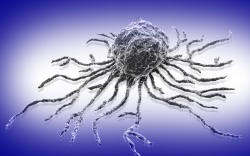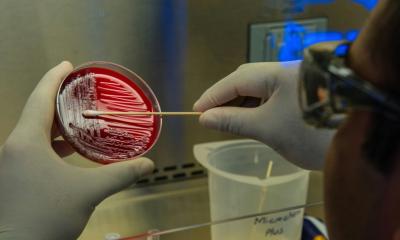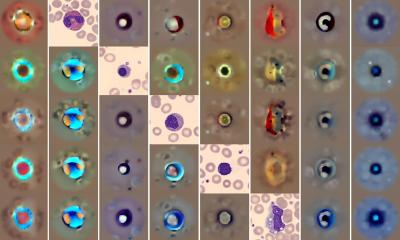Course of infections
Cell marker enables prognosis
When a pathogen invades the body, specific cells in the human immune system are ready to take immediate action in order to destroy it. The molecular characteristics of these killer cells were unknown until recently. Now, for the first time, a team from the Technical University of Munich (TUM) has managed to create a molecular profile of the protective cells. By studying these immune cells from patients' blood, the researchers were able to predict the course of infections.

The immune system defends us against pathogens and cancer cells. As it does so, it forms immune cells that attack and kill infected cells or cancer cells in a very targeted way, typical of the action of pathogens. This is why they are also known as killer cells. Until now, in the event of infection, it was difficult to predict how many of these killer cells would be active, and therefore how effectively the body could fight the disease.
Characteristic markers for killer cells
"Assessing a patient's ability to control an infection has always been a protracted process, because there were no markers to reliably label killer cells - the real 'task force' of the immune system," explains Prof. Percy Knolle, head of the Institute for Molecular Immunology & Experimental Oncology at TUM University Hospital Klinikum rechts der Isar. "Yet this type of prediction is extremely important for selecting a suitable course of treatment."
Percy Knolle and his team have now managed to identify a marker for killer cells for the first time. Their findings have been published in the journal Nature Communications. The scientists found a molecule - the CX3CR1 receptor - occurring only on the surface of these killer cells. They first demonstrated this in infection models with mice, and then verified their findings in a human patient study.
Fewer killer cells in chronic infections
In some patients, viral infections such as Hepatitis B can become chronic i.e. a certain amount of the virus remains permanently in the body. The immune system cannot control the infection and the disease is not completely cured. The scientists asked themselves whether the reason for this could lie with the killer cells. To find out, they used their newly discovered marker.
They launched a patient study with participants who had chronic hepatitis infections and discovered that these patients had only a very small number of killer cells targeting the hepatitis viruses. By contrast, the patients had developed many killer cells against other viral infections that they had overcome during the course of their lives. "It appears that the lack of specific killer cells is the reason why some infections become chronic and the patients are unable to effectively kill off the viruses," explains the scientist.
Percy Knolle sees great potential in the results: "The new marker will make predictions about the course of infections much faster and more precise. All we need to do is take blood from the patient and identify the number of killer cells using the new marker." This would allow suitable treatment to be initiated at an early stage, he explains.
Source: Technical University of Munich (TUM)
02.10.2015











